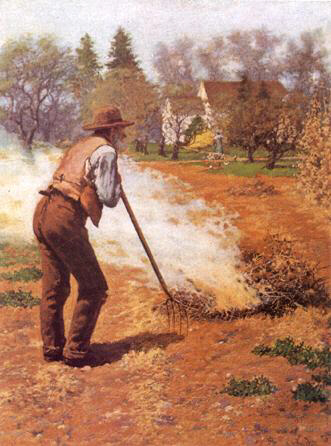
The Potato: How It Shaped the World
 |
The Potato: How It Shaped the World |
it was the start of a beautiful friendship. Juan de Castellanos, a conquistador charting the wild of Colombia, came upon a deserted Indian village in whose houses he found "maize, beans and truffles." In fact, the "truffles" were potatoes which, the explorer noted, were "good of flavor, a gift very accetable to Indians and a dainty dish even for Spaniards." This union -- potatoes and Europeans -- would change the course of world history as much as any gold or silver pilfered from the Incan Empire.
The true daintiness of the potato would not be discovered until a later age. At the outset, Europeans treated it as a food for the masses. Potatoes were loaded aboard Spanish treasure ships as a cheap food for sailors bringing home the booty of the New World. They reached England and Germany courtesy of Sir Francis Drake, who apparently picked up a batch during a stop in Colombia in 1556, where he was seeking to stake out part of the New World for Elizabeth I.
It wasn't so much the potato's taste that appealed to the European elite; they imagined it was an aphrodisiac. "Let the sky rain potatoes!" cries Shakespeare's Falstaff in a moment of passion. Europe's peasants were more cautious: before they came to subsist on the potato, they mistrusted it, even thought it might be poisonous. In 1619 potatoes were banned in Burgundy because "too frequent use of them caused the leprosy." Even starving Purssians refused to touch them when, in 1774, Frederick the Great sent a wagonload of potatoes to Kolberg to relieve the starving people.
Over time, however, necessity and familiarity dulled the peasantry's bias against this tuber. "One and a half acres, planted with potatoes, would provide enough food, with the addition of a bit of milk, to keep a family healthy for a year," wrote Alfred Crosby in "The Columbian Exchange." In Ireland, the potato was not ruined when battle raged over the ground in which it grew, and it could remain safely hidden in the earth throughout the winter, even when a peasant's home and stores were raided or set afire by English soldiers. Because potatoes are ideally suited to northern climates, Catherine the Great launched a pro-potato campaign as an antidote to famine in 18th-century Russia. vodka soon followed, and potato thus became indelibly fixed in the Russian diet. (The instant popularity of vodka should be no surprise; one of the Russian drinks it replaced was fermented grapes with a hunk of meat thrown in for flavor.)
But it was in Ireland that the potato made its greatest mark. "It was not exceptional for an Irishman to consumbe 10 pounds of potatoes a day and very little else," wrote Crosby. On this diet, the Irish population nearly tripled between 1754 and 1846. But depending on the potato was precarious' when the potato blight hit Europe in 1845 the consequences were devastating. In Ireland, as food historian Reay Tannahill describes it, "the potato famine meant more than food scarcity. it meant no seed potatoes from which to grow next year's crop. It meant that the pig or cow which would normally have been sold to pay the rent had to be slaughtered, because there was nothing to fatten it on." No cow for the rent could mean eviction, and hunger was soon compounded by scurvy, failing eyesight, even dementia, from vitamin deficiency. Nearly a million Irish men and women died as a result of the blight. Another million immigrated to the United States. They were, in a way, the New World's harvest from those first potato exports 300 years earlier.
(information supplied by Alfred Crosby's book The Columbian Exchange)
.
Have Questions Or Comments? Email Jay Edwards
Back to Class Page